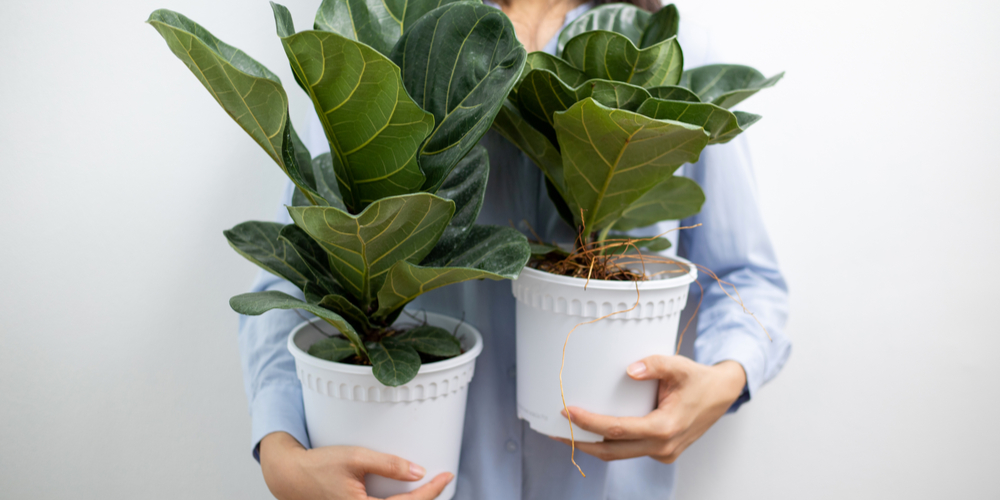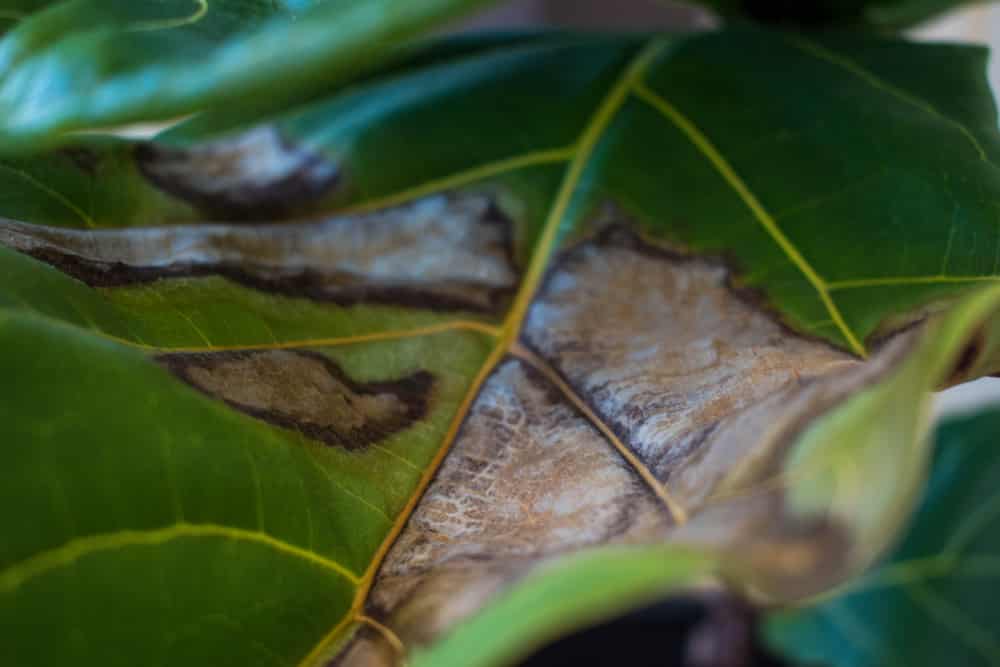Originally from Western Africa, the Fiddle Leaf Fig has become one of the most popular houseplants for its unique-shaped leaves. In their native habitat, these trees grow up to 45 feet tall. Plants kept indoors don’t reach these heights or produce fruit but still provide an attractive centerpiece in the home.
Even though many people have added the Fiddle Leaf Fig to their plant collection, most struggle to curate the conditions for the trees to thrive. These plants have tricky requirements and are extremely sensitive to the slightest change. One of the most frequently asked questions is how often to water Fiddle Leaf Fig plants.
Water Requirements

Fiddle Leaf Figs need water around once a week, but rather than sticking to a schedule, you should check the top 2 inches of soil before watering. If the soil is still moist, watering isn’t necessary. Tools like a soil moisture meter can also be used.
These plants tolerate many different types of soil, as long as it is well-draining. Don’t allow Fiddle Leaf Figs to sit in excess water, including the drainage plate. If the water isn’t removed, it could lead to problems with the roots of the plant. Watering this plant should be done conservatively for this reason.
Indicators of Improper Care
The distinct leaves are usually the first giveaway that something might be wrong. Yellowing or browning leaves are a sign of improper watering, either from overwatering or underwatering. Discolored leaves may also fall off prematurely.
Other factors besides water affect the growth of the Fiddle Leaf Fig. The position of the plant in the home can also cause gangly growth, like skinny stems. Plants exhibiting this type of growth usually aren’t getting enough light or might be reacting to something as small as a breeze.
Maintaining a Fiddle Leaf Fig
Problems resulting in abnormal growth can be corrected but not solved unless proper care is given, including:
- Adjusting the amount of water provided to the plant
- Moving it closer to the sun
Pruning and trimming help remove damaged parts of the plant. Cut browning or yellowing leaves at the stem to remove them entirely. If the discoloration is exclusive to the edge of the leaf, this can be trimmed following the leaf’s natural shape. Pruning healthy leaves also helps to encourage fuller growth.
Additional Care Tips
Not all problems in Fiddle Leaf Figs are caused by incorrect watering. This plant has other, equally important requirements. Let’s take a look at some of the best ways to ensure the viability of the plant in your home.
Humidity
In nature, Fiddle Leaf Figs grow in warm African rainforests, so they need a decent amount of humidity. Keep plants away from the driest places in the home—such as near heaters—and consider purchasing a humidifier to put near the plant. A humidifier won’t be necessary but may prove helpful in arid environments.
Caring for the leaves of the plant is essential as well. Fiddle Leaf Figs were named for their fiddle-shaped leaves, which are usually a brighter green on top than the bottom. A spritz of water and a quick wipe with a microfiber cloth removes dirt from leaves.
Not only does this help the plant look better, but it also improves the photosynthesis process, allowing sunlight to be more easily absorbed by the plant.
Soil
In addition to keeping the dirt moistened, other soil maintenance also helps Fiddle Leaf Figs. Remove fall leaves from the pot to prevent disease spread by rot. Adding a small amount of standard fertilizer can be beneficial about once or twice a year. Remember to start with a small amount when incorporating a fertilizer.
Aerating the earth on occasion benefits the plants as well. Stir the top layer of soil with a small gardening tool to increase the flow of beneficial components to the plant’s roots.
Final Thoughts
These care tips should help guide how to care for this houseplant favorite. Follow these tips and remember how often to water Fiddle Leaf Figs. Add water only when the soil feels dry or around once a week or so. These instructions should help these plants stay strong and beautiful for years.

